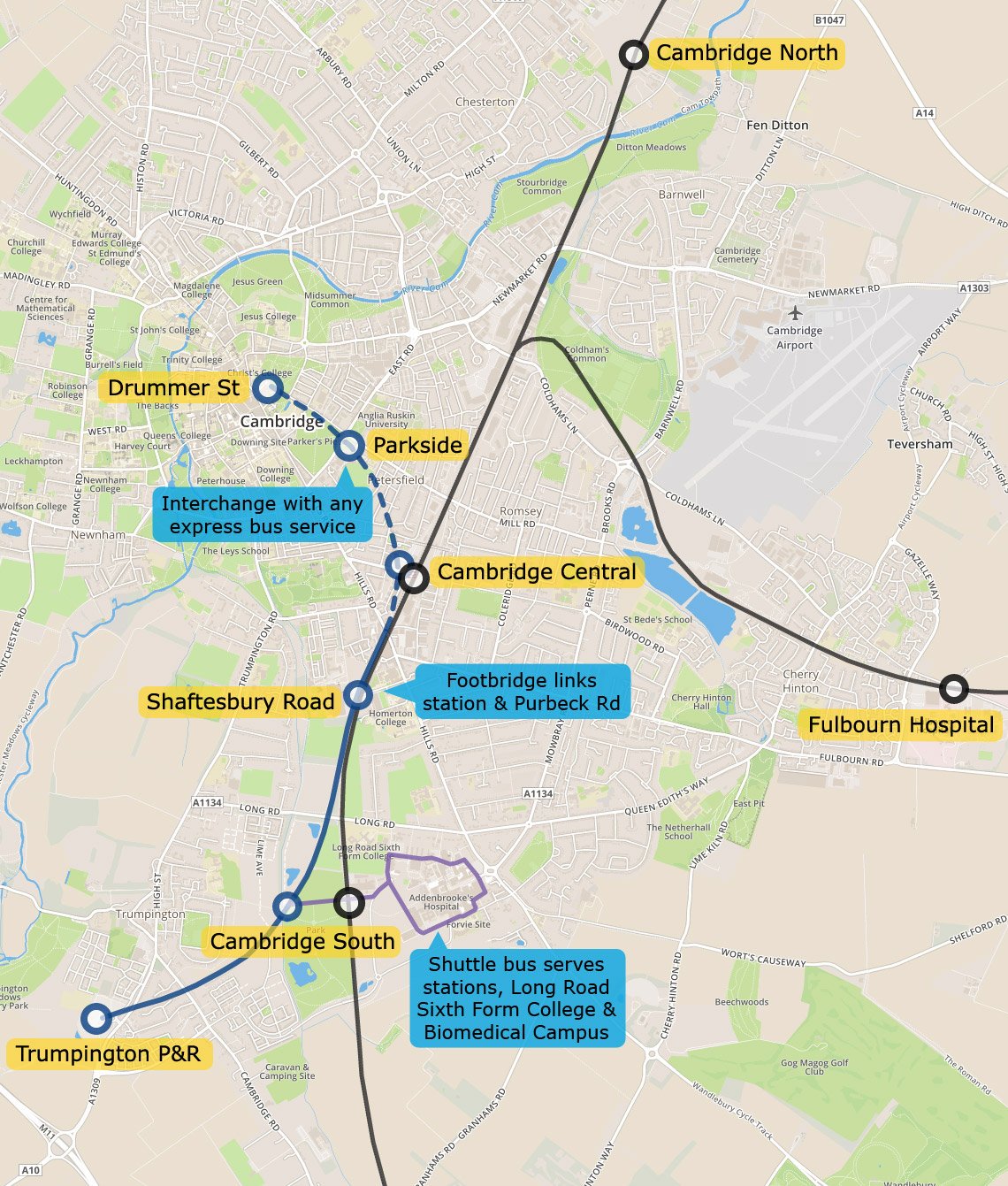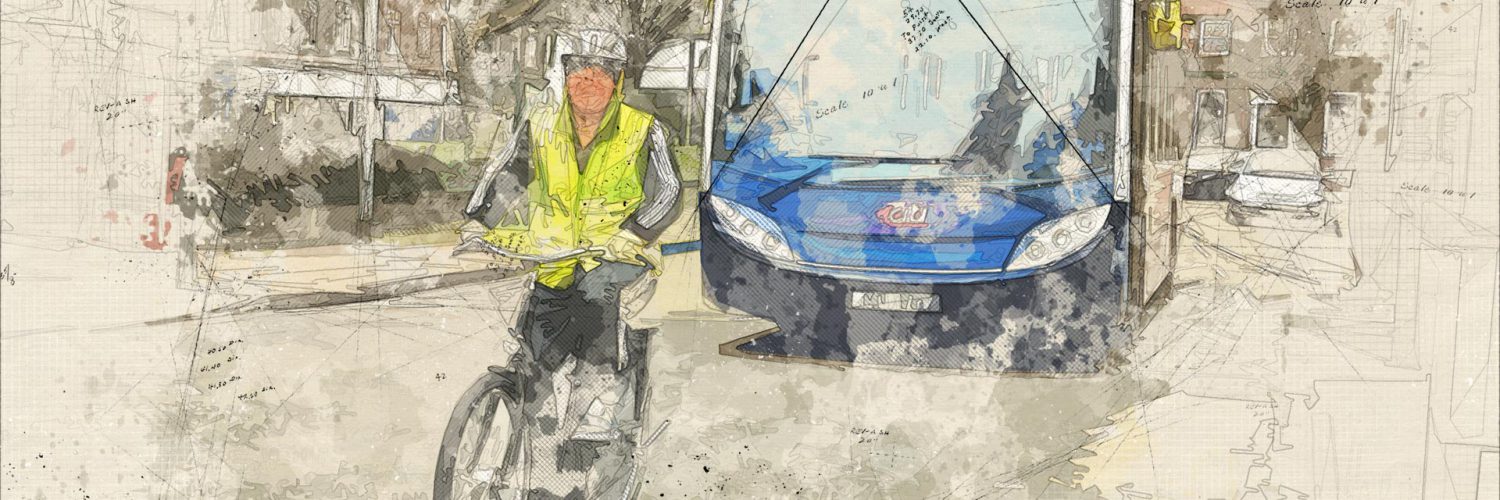There has been great interest in the light rail scheme proposed by Cambridge Connect. It’s obvious why: rail services are easy to understand, reliable, safe, comfortable and usually come with high quality stations.
Buses will continue to be the most appropriate mode of public transport for most of the Cambridge region because of the low population density. But much can be done to improve the appeal and convenience of bus services, in part by designing a network of ‘express’ routes that operate more like trains, on direct routes with widely-spaced stops, and easy interchanging.
But where a route carries a consistently high volume of traffic (in the order of 1,000 passengers per hour), we should look to a light rail solution.
The first route to consider is Trumpington P&R to Drummer St via the central train station. This could require just 2km of tunnel and three underground stations: one under Station Square; one at Parkside, at the corner of Mill Rd and Gonville Place; and the third under the Drummer St bus station.

The 5.5km route could be served by two 4-car trains (seating 300 passengers) shuttling back and forth, with a journey time under 10 minutes and a maximum wait time of 12 minutes.
A rail junction north of Long Road would also enable trains to run between Trumpington P&R, Cambridge North and a new station at Fulbourn Hospital.
Trumpington P&R could become the city’s major transport interchange, where most tourist and long distance coach services terminate. It could also be where most freight is broken out and consolidated for onward delivery to shops and homes in the city. The ‘last mile’ delivery could then be made using electric vans and cargo bikes.
The proposed Parkside station is on the inner ring road, along which Smarter Cambridge Transport proposes all express bus services should run (to make interchanging as simple and convenient as possible). It’s also a minute’s walk from Queen Anne Terrace car park, which could hold a large cycle hire centre, serving visitors and tourists.
That’s what joined-up, sustainable transport looks like.
For more rail-related ideas, see our paper on The Untapped Potential of Rail.
This article was first published in the Cambridge Independent on 16 November 2016.



a metro for Cambridge is a great idea but Cambridge is not just the Addenbrooke area and the Science and Business park. This scheme should cover a much wider area. Buses are not the solution. Do you want to be sustainable? Be sustainable. The town needs a scheme much more ambitious ,otherwise this is too unefficient.
This is only a brief introduction to the first piece in what could become a more extensive light rail network for Cambridge and the region. We will be publishing more about this later in the year.
An important point to bear in mind though is that, no matter how good and desirable something is, it has to be funded. Central government might provide some of the funding, but a large chunk of it will probably have to come from private sector investors.
A billion pounds of investment repaid over 50 years at an interest rate of 4% costs £46.5 million per year. To put this into perspective, the City Council’s entire budget for 2016/17 is £16.1 million.
The finance cost must be covered by ticket sales plus probably (at least in the early years) some form of local taxation, such as Council Tax, Business Rates, or maybe a local sales or tourism tax.
Just as important as planning the need for a light rail network is planning whether it’s affordable, and how it will be paid for over the following 50 or so years.